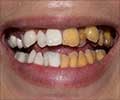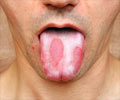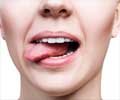- White tongue - (https://www.mayoclinic.org/symptoms/white-tongue/basics/definition/sym-20050676)
- Geographic tongue - (https://www.aaom.com/geographic-tongue)
- Macroglossia - (https://rarediseases.org/rare-diseases/macroglossia/)
- Kawasaki disease - (https://heart.org/en/health-topics/kawasaki-disease)
- Yellow tongue - (https://my.clevelandclinic.org/health/diseases/21072-yellow-tongue)
- Tongue Problems - (https://medlineplus.gov/ency/article/003047.htm)
- Mouth Ulcers - (https://www.nhs.uk/conditions/mouth-ulcers/)
- Tongue scrapers and cleaners - (https://www.mouthhealthy.org/en/az-topics/t/tongue-scrapers)
About
The tongue is often referred to as the most unique and powerful muscle in the body that has important functions such as licking, eating, speaking, chewing, swallowing, and breathing. It can also display some health problem signs you may not yet be aware of.
If you're wondering whether your tongue is considered "healthy" or not, keep reading to learn what changes you should look out for and when to see your health care provider.
How Does a Healthy Tongue Look Like?
A healthy tongue varies slightly in dark and light shades of pink in color with a thin white coating giving a coarse texture. It also has small nodules called papillae containing the taste buds on top. Many underlying health conditions alter the tongue's color, texture, and papillae. Here are a few conditions to keep an eye on.
Alterations in Tongue Color
The first noticeable sign of an unhealthy tongue is a significant color change. Following are the possible causes of tongue abnormalities based on color.

White Tongue
Thick white lines or white spots on your tongue could be an indication of:
- Oral thrush - A fungal infection that develops inside the mouth with the consistency of cottage cheese. It is commonly seen in infants and the elderly, especially denture wearers, or people with weakened immune systems.
- Leukoplakia - A oral condition that mainly develops due to the usage of tobacco products. It appears flat, hard white areas that cannot be scraped away, which can be a precursor to cancer.
- Oral Lichen Planus - If white lines that appear on your tongue look similar to lace, it's lichen planus. It usually resolves on its own(1✔ ✔Trusted Source
White tongue
Go to source).
Red Tongue
A red tongue could be a sign of:
- Vitamin B Deficiency - Vitamin B-12 and folic acid deficiency mainly cause a red tongue appearance. Once the deficiencies are resolved, you will notice an improved appearance.
- Geographic Tongue - Irregular, reddish patches on the tongue surface give a map-like appearance. These patches usually have a white border, and their location keep changing. This condition is harmless but can cause discomfort while eating(2✔ ✔Trusted Source
Geographic tongue
Go to source). - Scarlet Fever - It is an infection that produces a strawberry-like (bumpy and red) appearance on the tongue. Thiscondition is treated with antibiotics.
- Kawasaki Disease - This disease causes a strawberry-like appearance on the tongue surface. It is usually observed in children below five years and is accompanied by a high fever. It is a serious illness and needs immediate medical attention(3✔ ✔Trusted Source
Kawasaki disease
Go to source).
Yellow Tongue
A less serious and rare tongue color is yellow. Bacterial overgrowth primarily causes yellow tongue. Other causes may include: smoking, taking certain vitamins, psoriasis (skin disease), and jaundice(4✔ ✔Trusted Source
Yellow tongue
Go to source).
Black or Brown Tongue
The tongue appears black, brown, or yellow. A black-colored tongue may result from an overgrowth of tongue papillae leading to numerous bacteria on the tongue surface, making it appear black or brown.
It is a harmless condition and usually subsides without any medical attention. Along with a black tongue, other symptoms can also exist, such as a fuzzy or hairy appearance of the tongue, bad breath, and altered taste sensation. Treatment includes removal of any underlying cause and maintaining good oral hygiene.
Purple or Blue Tongue
A purple tongue is very uncommon and occurs in some nutritional deficiencies such asvitamin B12(riboflavin) deficiency. There is a possibility that a purple tongue may later change to a blue color. A blue tongue is a sign of cyanosis, which occurs when the oxygen content of blood is very low.
Changes in Tongue Shape
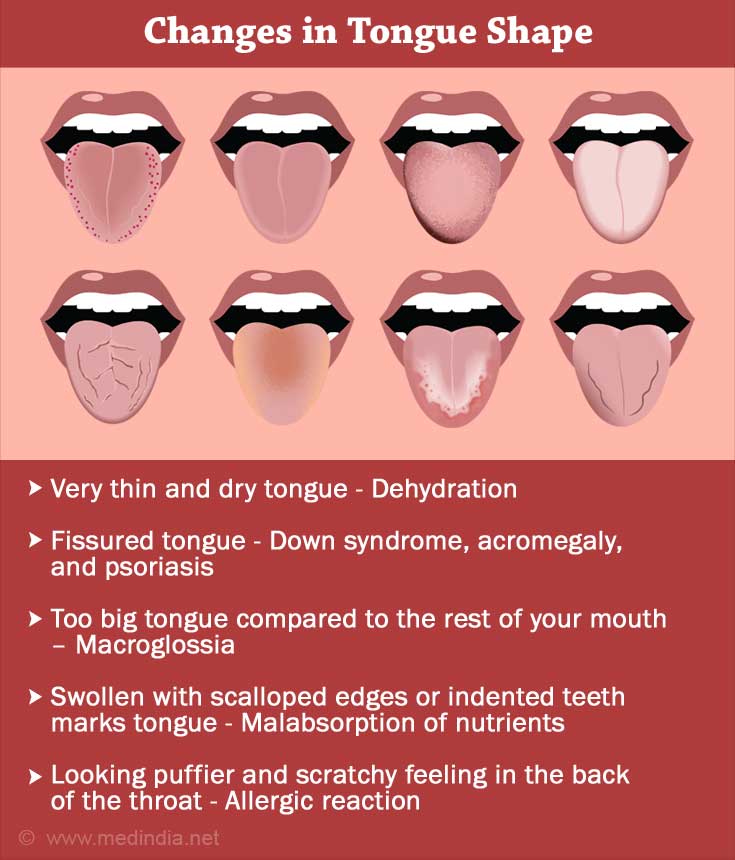
- If the tongue is swollen with scalloped edges or indented teeth marks, it may indicate malabsorption of nutrients.
- If you notice the tongue looking puffier than usual along with a scratchy feeling in the back of the throat, especially after a meal, can also signal an allergic reaction.
- A very thin and dry tongue may be a sign of dehydration.
- Tongue with deep grooves can develop due to physiologic deepening of normal tongue fissures as we age. Fissured tongue is also associated with Down syndrome, acromegaly, and psoriasis.
- When your tongue is too big compared to the rest of your mouth, it is called macroglossia. It commonly occurs due to hypothyroidism (underactive thyroid)(5✔ ✔Trusted Source
Macroglossia
Go to source).
Changes in Tongue Movements
- A deviated tongue that doesn't stick out straight, but veers unduly to the right or left, generally indicates nerve damage.
- A deviated tongue is often associated with facial palsy or paralysis and maybe a sign of convulsion or stroke.
- In paralysis, the tongue shall have deviated toward the paralyzed side. Tremors are noted in nervousness, thyrotoxicosis, delirium tremens, and Parkinsonism(6✔ ✔Trusted Source
Tongue Problems
Go to source).
Tongue Ulcers
Open sores or cuts on the tongue that can be painful and irritated while eating and drinking. One of the most common tongue ulcers is the canker sore, which may arise for an unknown reason(7✔ ✔Trusted Source
Mouth Ulcers
Go to source).
Tongue ulcers arise from various conditions including viral infection, injury to the tongue, or even oral cancer. If these ulcers last more than twoweeks, immediately consult your doctor or dentist.
Treating the underlying cause of the tongue may help to resolve the sore. In mild cases, improving oral hygiene will help to resolve the tongue ulcer.
Watch Your Tongue!
The tongue corresponds to different organs in the body. Therefore, it is important to look at your tongue in the mirror and notice the colors, textures, bumps, and coatings on your tongue.
It is best to inspect your tongue before brushing your teeth and 30 minutes before eating. If you find any abnormalities in your tongue, schedule a visit to your dentist as soon as possible.
How to Take Care of Tongue Health?
Looking after your tongue is as important as taking good care of your teeth if you want to maintain good oral health. Here's how to do it(8✔ ✔Trusted Source
Tongue scrapers and cleaners
Go to source):
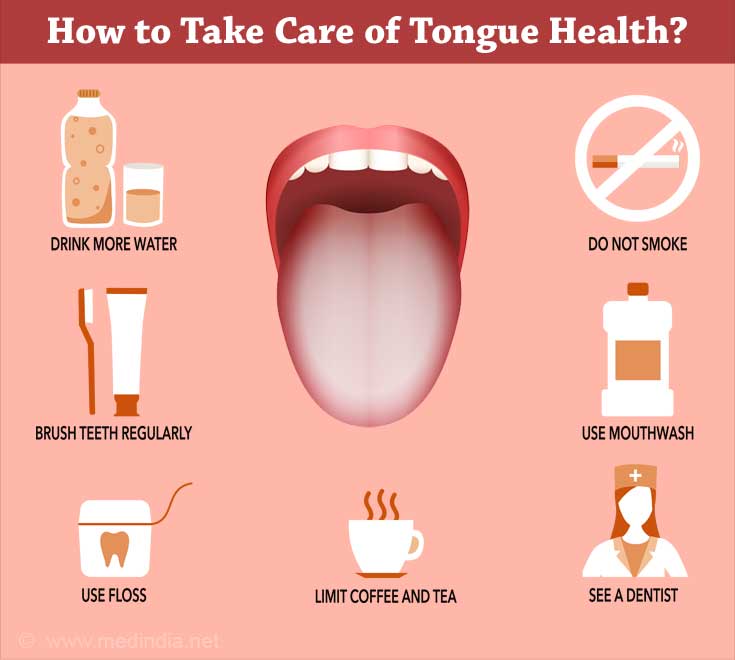
- Drink Plenty of Water - Staying hydrated puts bacteria and food away from your tongue and helps to prevent a dry mouth, which increases your risk of fungal infections and tooth decay.
- Clean Your Tongue - Use a toothbrush, tongue scraper, or cleaner to remove bacteria and dead cells from the surface of the tongue, which may cause bad breath.
- Avoid Smoking - It can irritate your tongue and contribute to conditions like leukoplakia.
- Chew Sugar-Free Gum - This stimulates saliva production, which helps rinse away bacteria, clears food, reduces acid in your mouth, and prevents dry mouth conditions.



